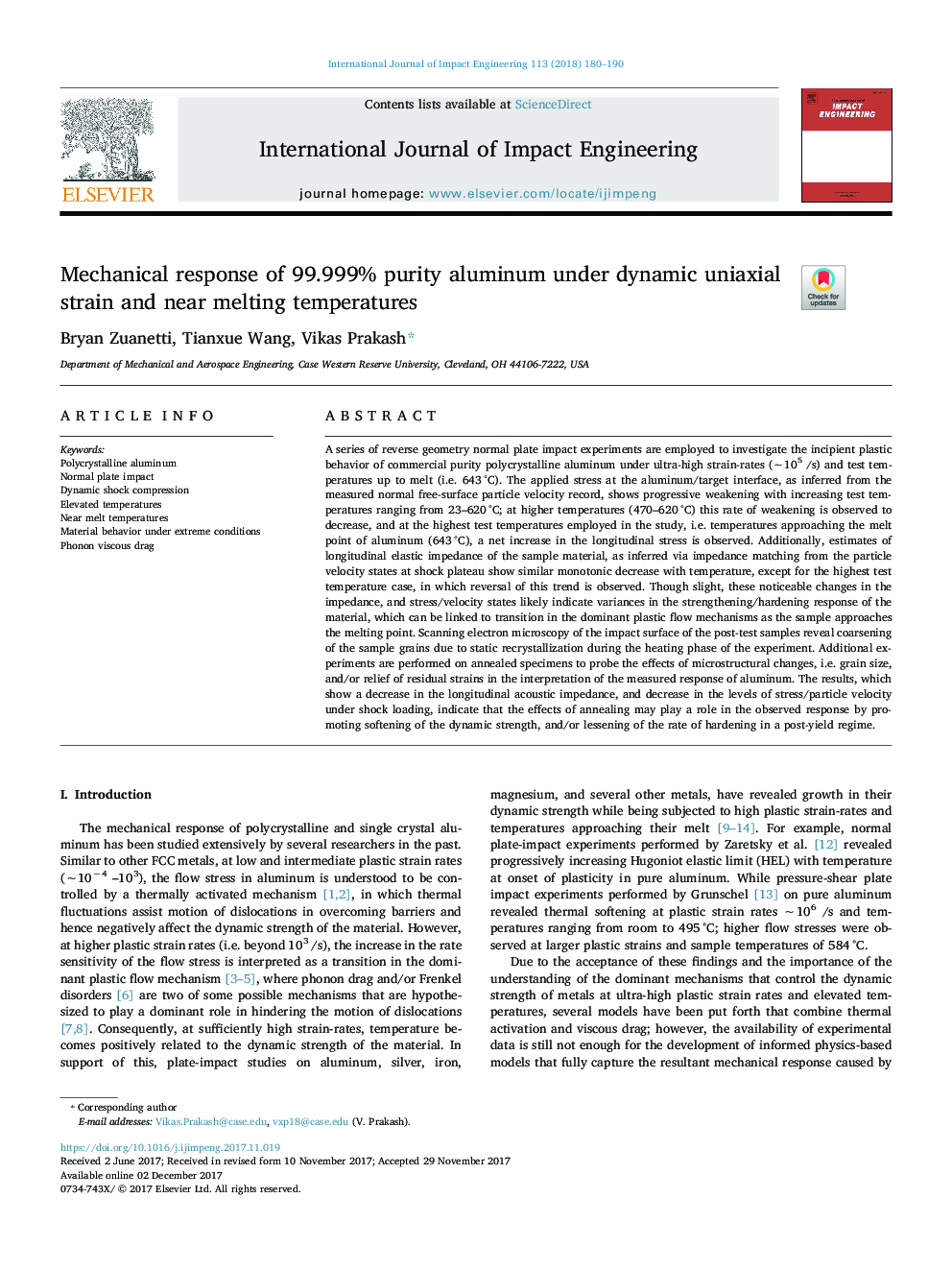| Article ID | Journal | Published Year | Pages | File Type |
|---|---|---|---|---|
| 7173001 | International Journal of Impact Engineering | 2018 | 11 Pages |
Abstract
A series of reverse geometry normal plate impact experiments are employed to investigate the incipient plastic behavior of commercial purity polycrystalline aluminum under ultra-high strain-rates (â¼105 /s) and test temperatures up to melt (i.e. 643°C). The applied stress at the aluminum/target interface, as inferred from the measured normal free-surface particle velocity record, shows progressive weakening with increasing test temperatures ranging from 23-620°C; at higher temperatures (470-620°C) this rate of weakening is observed to decrease, and at the highest test temperatures employed in the study, i.e. temperatures approaching the melt point of aluminum (643°C), a net increase in the longitudinal stress is observed. Additionally, estimates of longitudinal elastic impedance of the sample material, as inferred via impedance matching from the particle velocity states at shock plateau show similar monotonic decrease with temperature, except for the highest test temperature case, in which reversal of this trend is observed. Though slight, these noticeable changes in the impedance, and stress/velocity states likely indicate variances in the strengthening/hardening response of the material, which can be linked to transition in the dominant plastic flow mechanisms as the sample approaches the melting point. Scanning electron microscopy of the impact surface of the post-test samples reveal coarsening of the sample grains due to static recrystallization during the heating phase of the experiment. Additional experiments are performed on annealed specimens to probe the effects of microstructural changes, i.e. grain size, and/or relief of residual strains in the interpretation of the measured response of aluminum. The results, which show a decrease in the longitudinal acoustic impedance, and decrease in the levels of stress/particle velocity under shock loading, indicate that the effects of annealing may play a role in the observed response by promoting softening of the dynamic strength, and/or lessening of the rate of hardening in a post-yield regime.
Keywords
Related Topics
Physical Sciences and Engineering
Engineering
Mechanical Engineering
Authors
Bryan Zuanetti, Tianxue Wang, Vikas Prakash,
